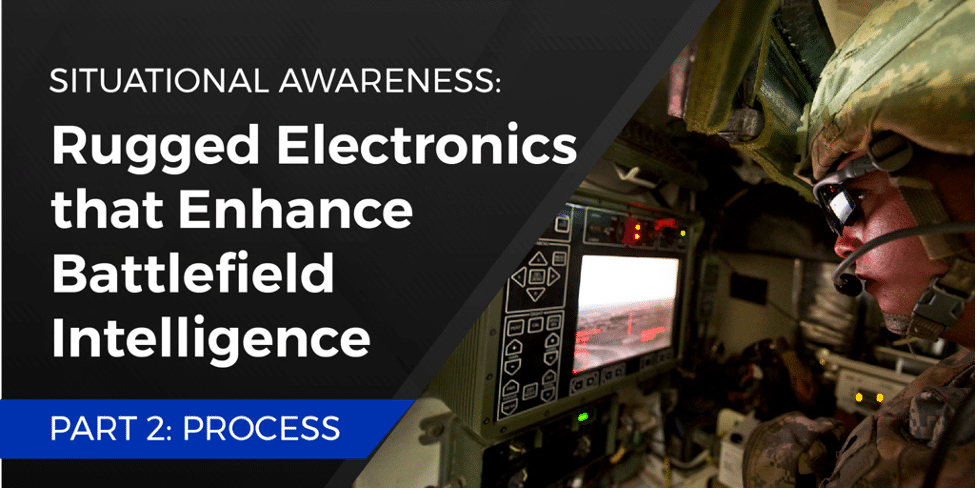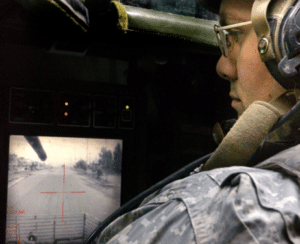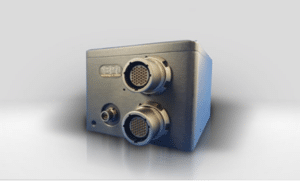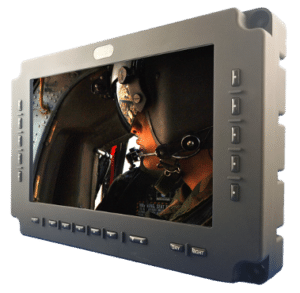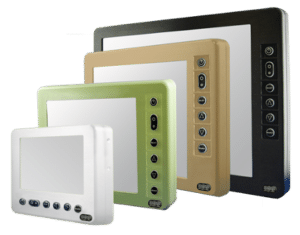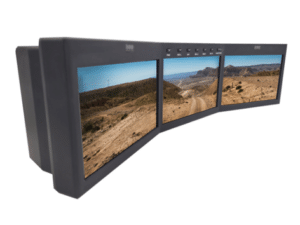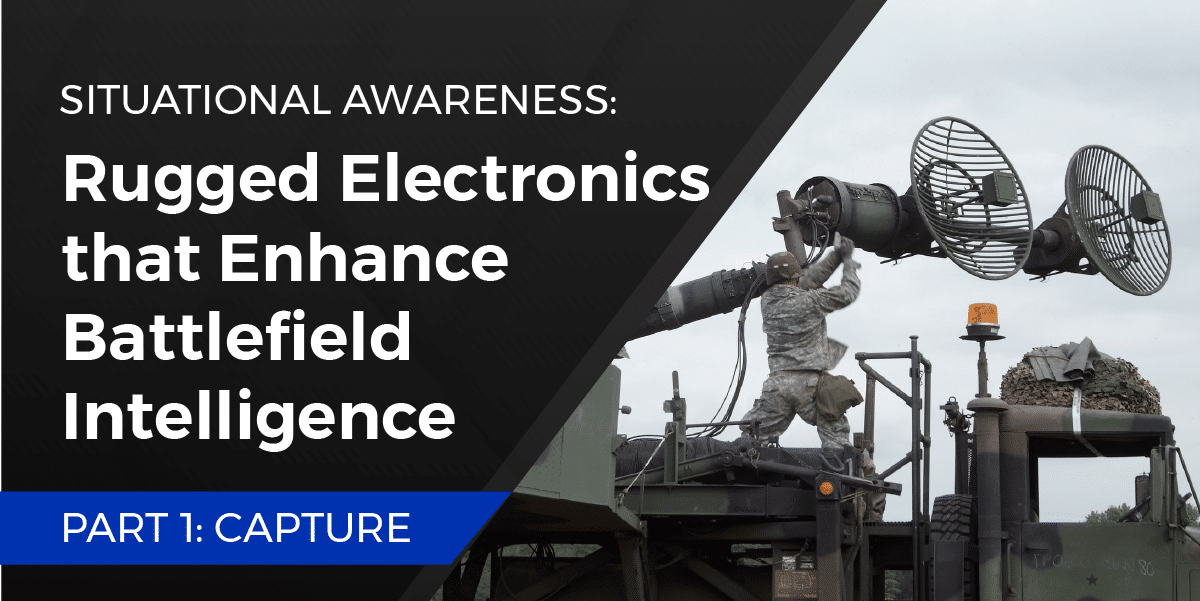Situational Awareness: Rugged Electronics that Enhance Battlefield Intelligence – Part 2: Process

Situational Awareness: Rugged Electronics that Enhance Battlefield Intelligence – Part 2: Process
Recapping Situational Awareness
In the first of this three-part series, we explored the role of situational awareness on the battlefield in understanding the environment and anticipating potential threats. We examined the process in which information is captured on the battlefield and the technologies that enable intelligence gathering.
Through cameras, sensors, unmanned systems and technologies like radar and GPS, critical data such as enemy position, vehicle diagnostics and even biological hazards are captured. But, before this information can make its way to those who can use it to make better-informed decisions, it must first go through a stage we’ll refer to as “process.”
In this second blog, we’ll take a closer look at the technologies and products which process captured intelligence and enable battlefield operators to understand and act on that information.
Processing Intelligence
Imagine this: a Stryker vehicle is traveling down a rough dirt road in XYZ country. As the Stryker vehicle continues down the path, its crew pay close attention to the displays on the main driver control panel. The central battlefield management computer is feeding a series of inputs, including their current location, the position of friendly forces and 360-degree video feed of their surroundings.
Suddenly, radar detects an unknown presence in the area. The mission computer, informed by the onboard radar, signals to alert the operators via an on-screen message and alarm. It may be a mistaken friendly vehicle, or it may be an enemy, but with this intelligence, the vehicle operator can choose to examine additional data being captured by the vehicle’s system, or simply change course altogether.
It’s not difficult to see how situational awareness plays a key role in informing decision-making and supporting mission safety. It’s crucial information is first captured, but having the onboard battlefield management computer and intelligent displays is equally as important in ensuring operators on the field can interpret that information and make critical judgments.
Mission Computers
The computers designed for today’s modern military hardly resemble those we use in our personal lives or carry around in our pockets. These rugged military computers must face some of the world’s most demanding conditions and environments. These systems must allow for thermal management, prevent the ingress of dust or water and withstand heavy vibration.
But, MIL-Spec design and durability aren’t the only factors to consider. Computing power is critical, and ensuring a mission computer’s processor, RAM capacity and memory match the program’s specifications is highly important. Since the 1990s, DSE has engineered and built military mission computers with the goal of enabling situational awareness on the battlefield.
Our solutions include the powerful ALPHA rugged computer, which permits the use of not only the latest Intel® Core processors but also a suite of proven Atom® and ARM based CPUs. Its additional onboard systems facilitate the communication of information through a gigabit ethernet switch, GNSS (GPS, GLONASS, Galileo, BeiDou), Dual CANBus, GPIO, USB/Serial, audio, WiFi and cellular.
ALPHA’s equally as rugged but much more compact predecessor, the MC-10 rugged micro mission computer, packs a powerful system in a lightweight, miniature footprint. The MC-10 features a similarly wide-range of inputs/outputs, including gigabit ethernet, USB 2.0, RS-232/RS-485, analog audio, display port and HDMI or DVI-D. It’s designed to use reliable Intel CPUs and the clock speed, RAM and memory are all configurable.
Mission computers, including those designed by DSE and others, are an important piece in this step we call processing. Not only do they interpret the signals and information captured by cameras, sensors and radar, but they relay that intelligence to the battlefield operators where it becomes actionable. Choosing a mission computer with the appropriate feature set, durability and configurations is essential to enabling better situational awareness.
Rugged Displays
Once the high-end processors compute the data received by a camera feed, it must then be routed to a display. And, just like rugged mission computers, these rugged military displays are not your average monitor. They include MIL-Spec design features, which enable them to comply with strict guidelines set out in military standards. They are equipped with a variety of inputs and outputs to communicate with onboard systems and often employ a series of advanced features that enable programmability and customization. Rugged military displays are much more than an LCD.
In DSE’s catalog of rugged electronics, displays take a top position as our most-integrated solution over our 30-year history. The FHDRM is a prime example of a modern rugged display, featuring full high-definition resolution. It delivers 1080p detail with a high-brightness backlight to ensure complete optical performance. Picture-in-Picture display, possible via FHDRM’s video encoder, enhances situational awareness by enabling operators to have primary and secondary views of camera feeds or computer diagnostics. Programmable bezel keys, a resistive touch screen and remote command/control also allow for the easy interconnection with existing architecture.
For applications that require flexible options, the MSM2 Mil-Spec monitor features six unique sizes and a myriad of video input options including DVI, VGA, composite, VGA/composite and DisplayPort. Customization doesn’t end there, and MSM2 supports configurable color, connectors, user interface, firmware and more. Its flexibility and durability have made it a top choice for integration on military vehicles, including THAAD Missile Launcher, Stryker, B1 Bomber, Amphibious Combat Vehicle, C-130, and more.
Finally, for applications requiring the highest degree of situational awareness when it comes to viewing mission surroundings, the Typhon offers three high-definition panels. This fully-contained system supports integration with both legacy and advanced digital sensors through 6 distinct SDI and 3 RS-170 inputs—a total of 9 independent camera inputs. Typhon also features an on-board CANBus communication interface, permitting remote control and access to features such as video source selection, built-in-tests, day/night modes and user preferences. Typhon delivers information at the operator level to ensure mission safety and excellence.
Closing the Loop on Situational Awareness
We’ve discussed how information is first captured, and then how it is processed for operators to interpret and take action. The final step, distribution, will cover how this information is disseminated outside of the initial vehicle terminal. This process enables the full-system approach to situational awareness where products and technologies work together to inform operators and empower knowledgeable decision-making.
Situational Awareness: Rugged Electronics that Enhance Battlefield Intelligence - Part 1: Capture

Situational Awareness: Rugged Electronics that Enhance Battlefield Intelligence – Part 1: Capture
What is situational awareness?

In the defense world, this intelligence is often provided and enhanced by technology—from tracking the position of friendly and enemy forces, to analyzing terrain, vehicle diagnostics or even weather conditions. This process consists of a system of devices and technological capabilities that allow intelligence to be captured, viewed and distributed—all in the name of enhancing situational awareness.
In this first blog of our three-part series, we will focus on the first step in this system, capture.
Part One: Capturing Information
Before intelligence can be interpreted by operators on the battlefield, it must first be collected. Technology has revolutionized the way this information is captured, and thanks to sensors, drones, radar and more—threats can often be identified in real-time and without risking the lives of soldiers.
Cameras and Sensors
Military vehicles are often equipped with advanced cameras and sensors to provide the crew with a 360-degree view of the surroundings. These cameras go beyond the standard video feed, with the ability to capture moving targets and to provide thermal and multispectral imaging. And, it goes without saying these cameras are uniquely positioned to withstand demanding environmental conditions, such as extreme temperatures, fog, high ambient light and more.
While cameras capture visual inputs, sensors can detect a variety of factors often imperceptible by the naked eye. This can include sensors for the detection of biological threats (such as aerosolized agents), radioactive material, explosives and toxic chemicals. When used on the battlefield, either in manned or unmanned vehicles, sensors can relay when an environment may be too dangerous to risk exposure to warfighters.
Unmanned Systems
Unmanned systems are just that—unmanned, leaving soldiers out of the way of harm in more precarious scenarios. This includes aerial systems, such as drones, which have the ability to surveil large areas quickly and provide teams with a line of sight to environmental conditions and enemy locations before sending in troops.
These devices are often equipped with additional advanced capabilities, such as thermal imaging or night vision and are designed to collect intelligence without being detected.
Radar and GPS
A powerful tool for enhancing situational awareness, radar transmits high-frequency radio signals to detect personnel and vehicles. These surveillance tools can scan 360 degrees every second to provide a detailed picture of movement within a set perimeter. As with cameras, MIL-Spec radar systems are designed to perform despite any extreme weather or lighting conditions.
As important as monitoring friendly and enemy force positions is, monitoring one’s own movements is critical to enhancing situational awareness and making informed decisions. GPS aids in this process by providing real-time updates on position changes and navigation.
A Full System Approach to Situational Awareness
The tools that allow intelligence to be captured, viewed and distributed on the battlefield work together to enhance situational awareness. Follow along with this series to explore how this system works together to maintain safety and ensure mission success.
Photography credit: US Army
